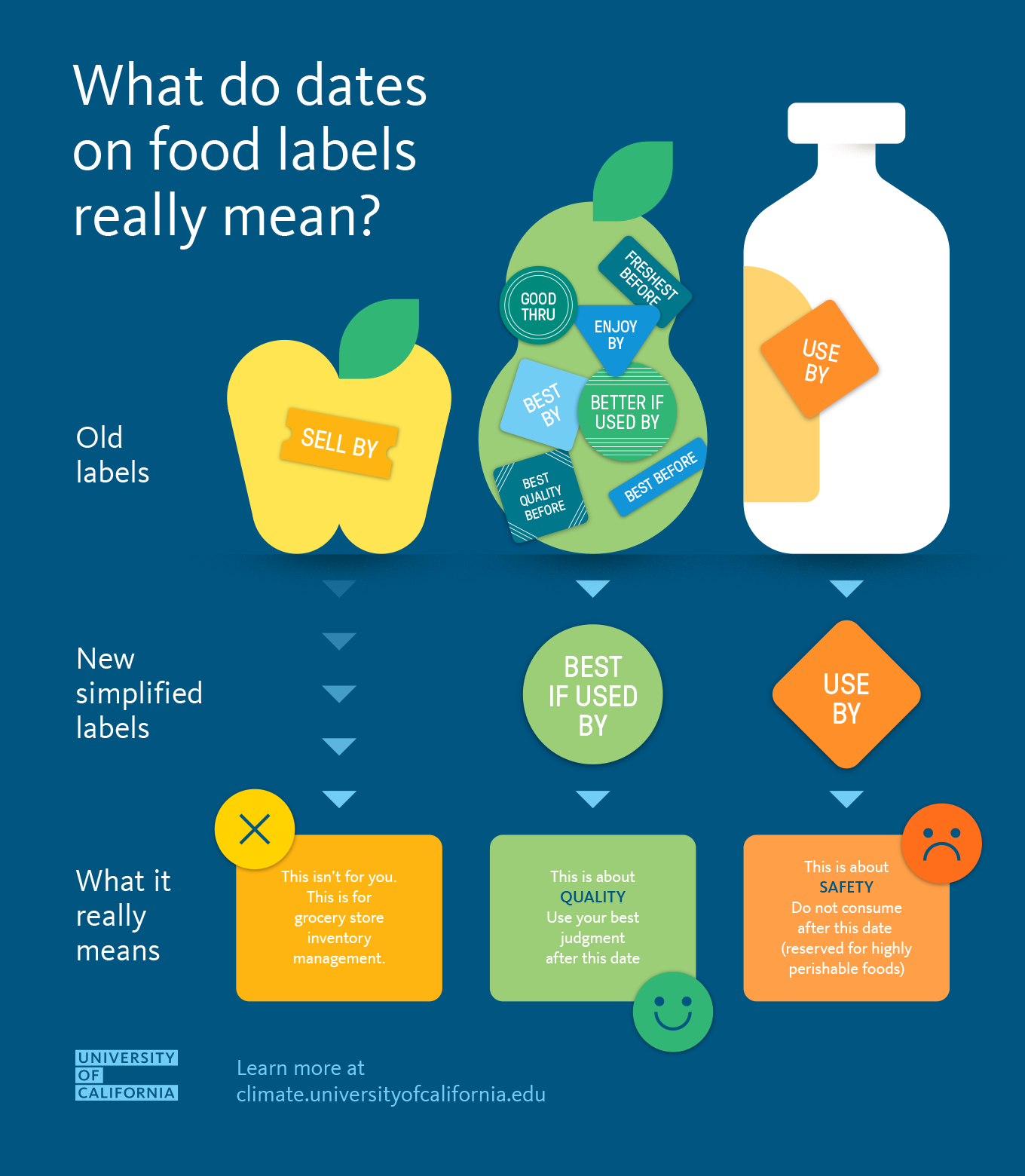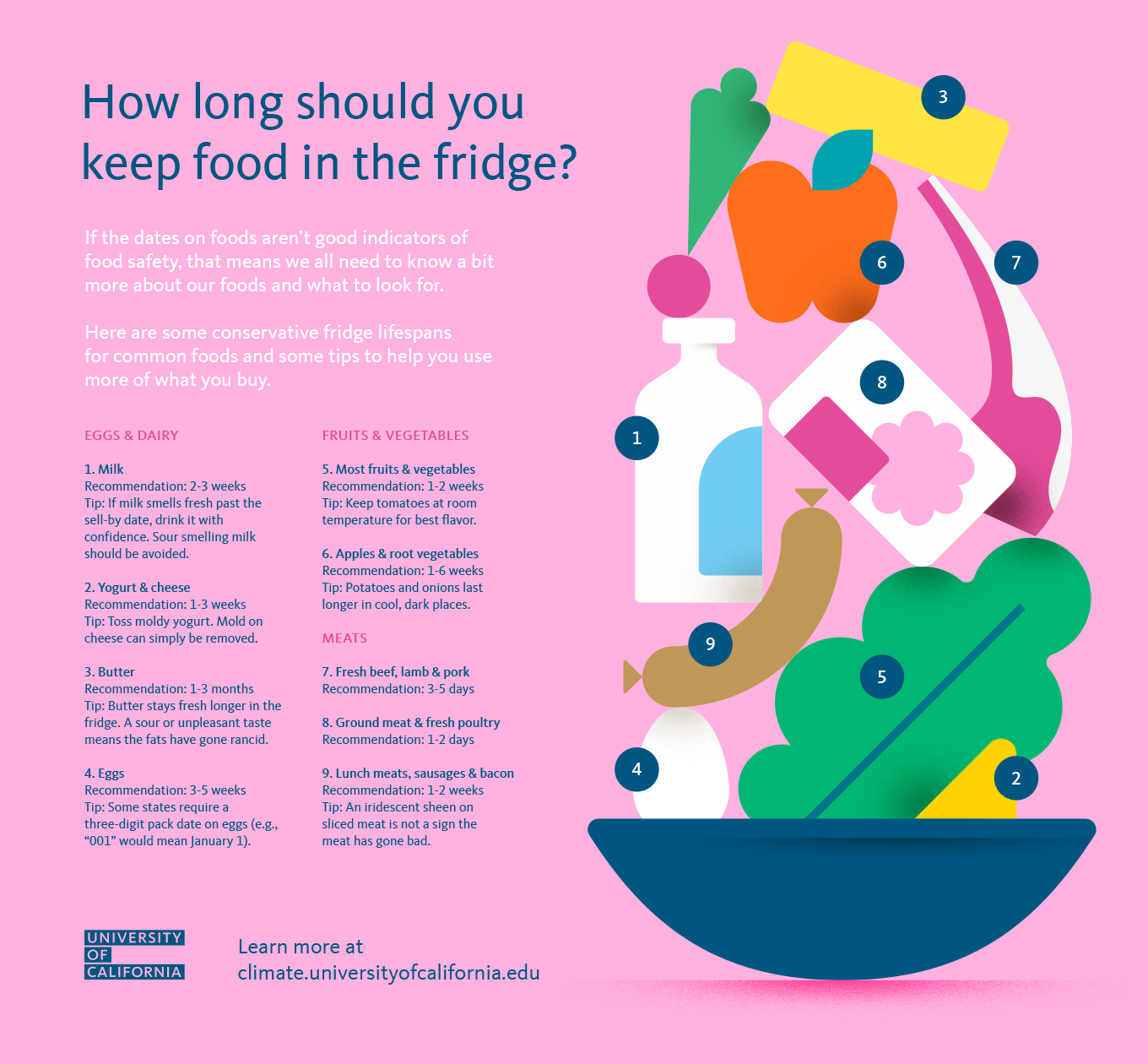Not only does all of that good food go to waste, once it’s tossed it contributes to yet another problem: global warming. Food waste is a major source of methane, a potent greenhouse gas. And it’s not small potatoes: A report from the U.N.’s Food and Agriculture Organization found that if food waste were a country, it would be the third largest emitter of greenhouse gases worldwide.
A lot of the waste at home could be prevented if we weren’t so quick to throw out perfectly good food simply because of a date on a package.
So what do those dates mean anyway?

Sell By: This date isn’t for you, unless of course you run a grocery store. This date helps stores with inventory management. Products can be perfectly good long after their stamped sell-by date.
Best By, Best Before, Enjoy By, etc.: This isn’t an expiration date, either. This is the last day the manufacturer thinks the food will be at peak quality. How they determine that is up to them. Foods will often be good well past this date.
Use By: Under new simplified label guidelines, this one actually means that you should consume it by this date and not after. This is an indication of safety, reserved for highly perishable foods.
If this is all confusing, help is on the way. Manufacturers in the U.S. are being encouraged to switch to a new standard of just two labels: “Best if Used By” (a mark of quality determined by the manufacturer), and “Use By” (a mark of safety, used only for highly perishable foods). Widespread adoption of the new standard is expected by July 2018. If you keep food past the “Best if Used By” date on the package, use your best judgment: don’t be afraid to sniff, touch, visually examine or even taste it yourself to determine if it’s gone bad.
How long should you keep food in the fridge?
Recommended shelf-lives of common foods kept in the fridge are generally quite conservative, and many foods can be eaten well past these dates. Here are some standard recommendations, plus some tips to help you use more of the food you buy.

Advanced Tips
Store smarter. Use airtight containers, don’t store milk or eggs in the fridge door where warm kitchen air can spoil them, and freeze meats, soups or leftovers when they’re close to expiring.
Plan meals. Before you shop, know exactly what you’re going to get. Don’t buy perishable food without a meal in mind.
Eat leftovers. Don’t just toss good food. Eating leftovers saves time and money as well.
Compost. Try to compost food scraps, either at home, a community garden, or in your city’s green waste program if you have one. Composting significantly reduces emissions from food waste.
Downsize. If you find you don’t finish your meals, try using smaller plates or bowls to keep your portion size down.
Fixing food labels is just one piece of the pie. Watch below to see how researchers and entrepreneurs are taking on food waste to help the climate and get food to the people that need it.
